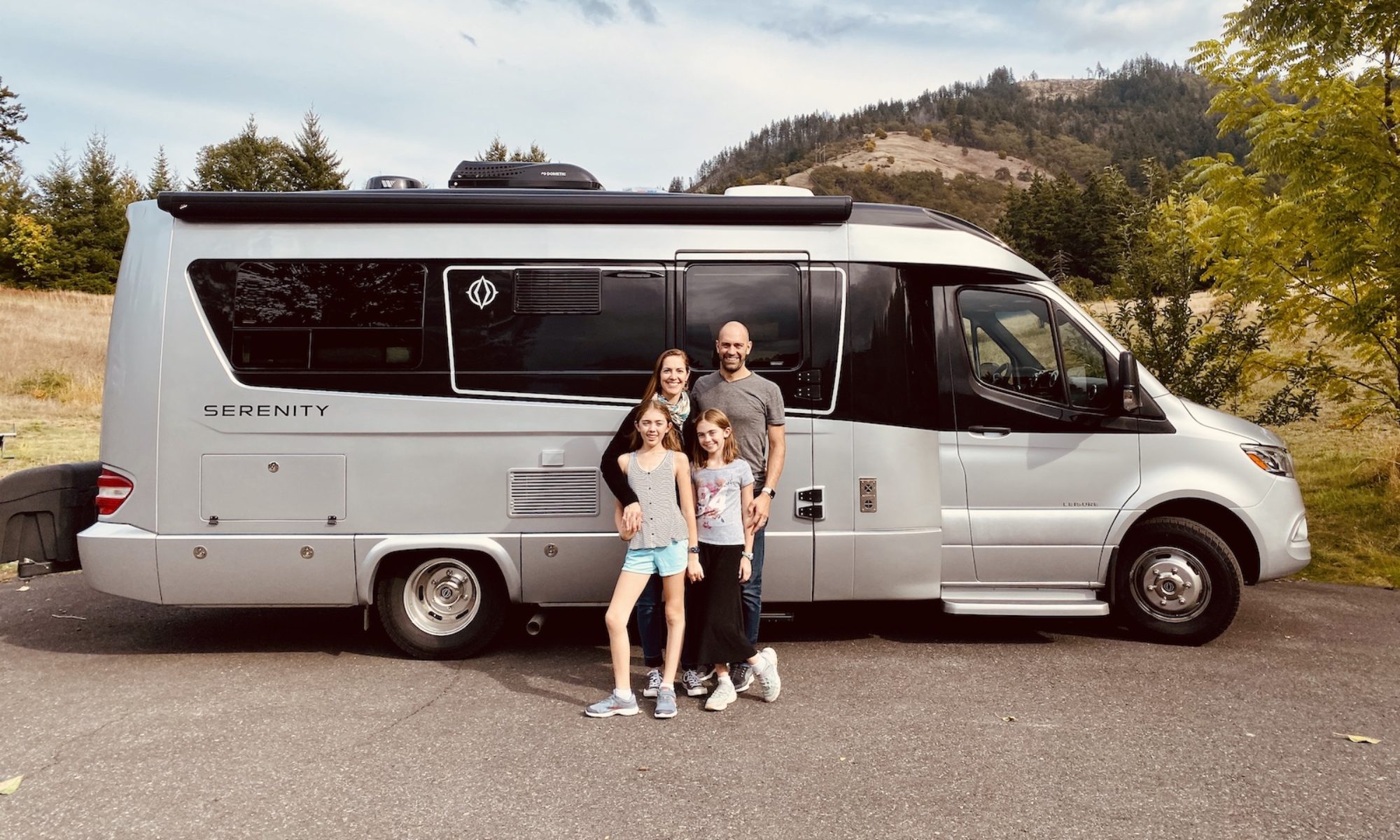
(The end result of uncoupling from our stuff.)
Five years ago we undertook our first major uncoupling with stuff. We sold our 3,000 square foot house and parted ways with about half of our belongings. We moved into an urban duplex that was just under 1,500 square feet. Having less space to clean, less stuff to manage, and no yard to maintain felt like huge weights off our back. And yet to make this RV adventure possible, we had to redefine our relationship with stuff again. Last time, we dropped 50% in size, this time we dropped 90%.
While moving into a 160 square foot space is definitely radical, let us be clear that we are not (yet) radical minimalists. We are maintaining a 10 x 10 storage unit that will be full of items that we’re not yet ready to part with (like a fancy dress I still hope to get to wear someday), that would be stupid to part with (our gorgeous dishes and flatware), or that are irreplaceable (looking at you high school yearbooks!).
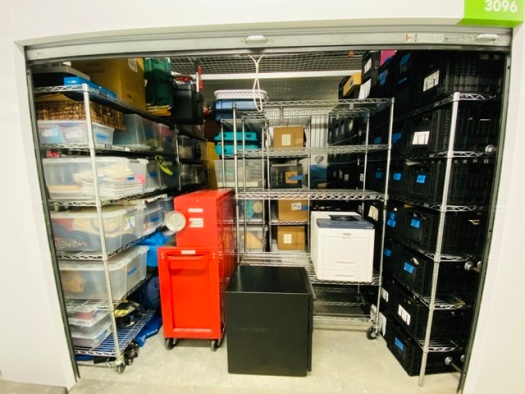
(All of our stored possessions… and still room to spare.)
But we undertook the enormous task to look at every item in every drawer and cupboard and decide whether it comes with us, goes into storage, or finds a new home. And even with the smaller duplex, there were still so many drawers and cabinets, full of things to consider.
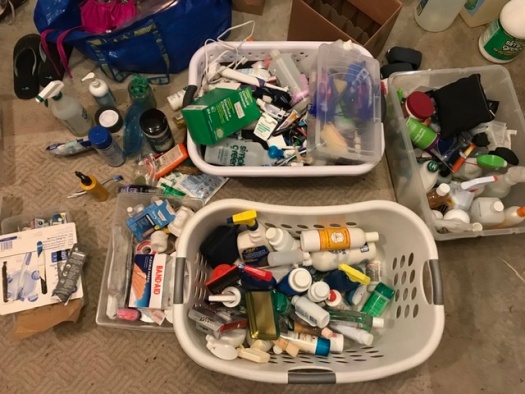
(What was hiding in our linen closet and in the cupboards under the sinks.)
Uncoupling from our stuff would have been a lot easier if I’d been willing to pull out a large box and dump most things in it and cart it off to the dumpster, or even to Goodwill. This is where the “conscious” part of conscious uncoupling comes in — it takes a tremendous amount of presence, intention, focus, and cognitive labor to let things go in a sustainable way.
But in keeping with my efforts to reduce our household waste, and since I know that a large percent of donated items to thrift store organizations (like Goodwill) actually end up in the landfill (or worse, things like clothes being sent to African countries putting local textile makers out of business), I wanted to find other solutions.
(The art cabinet required significant uncoupling!)
The kids had accumulated many boxes of things we can’t take with us, and that they didn’t want to come back to: art supplies, games, books, toys, stuffies, dolls, and more. I found a local family shelter that welcomes donations for most of these things and we delivered a car load of kids supplies as well as jackets, hats and scarves for adults. Plush stuffies are a much harder thing to find a home for. After extensive research, I discovered the police department of a nearby city collects clean plush dolls and does a “fill a patrol car” program every holiday season to give away these toys to kids in need in their city. They were grateful for the three huge bags of plush toys we dropped off.
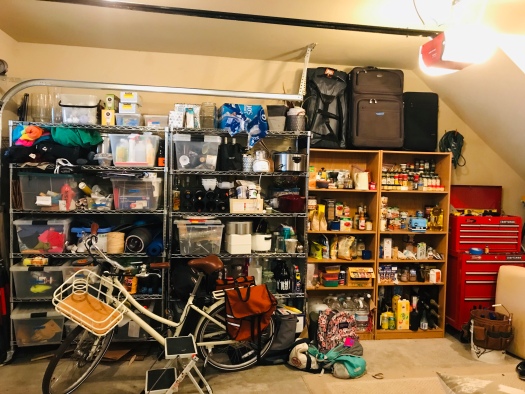
(The “before” picture of the garage storage.)
And then there’s Craigslist. Managing Craigslist postings is nearly a full time job. The first step of getting items posted (taking photos, measurements, details, links, pricing) seems like it would be the hardest part. But I find it harder to deal with the incoming inquiries and sales. So many people express interest and disappear. Or exchange 3 or 4 emails and then stop responding. I’ve gotten good about telling from someone’s first email about the likelihood of whether the sale will go through, and thus how much time and energy to put into it. I’ve also decided to be radically trusting of people. Often, someone wants to stop by to buy something when we’re not going to be home. Rather than haggling to find a mutually agreeable time, I’ve been leaving the item on the front porch, and asking them to leave the money under the mat. Amazingly, I’m batting 100% on this strategy. Trust people and they are trustworthy.
I’ve had a lot of fun with the distribution method we call the “free box” — which means leaving stuff in a box out at the corner. I’m not sure if this phenomenon is unique to urban Portland, but it is certainly popular in this city. People will take almost anything left in a free box. Sometimes the weirder the better. I love the thought of someone walking by and finding something that delights them and that is FREE!
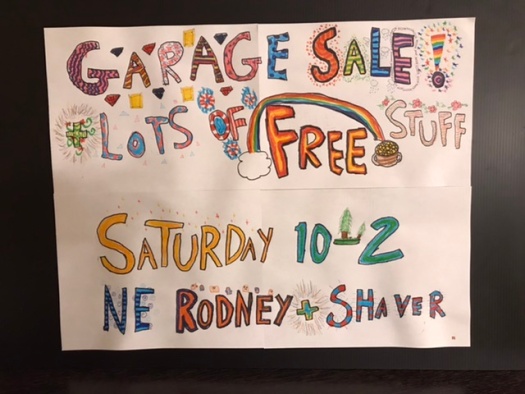
(The product of our in-house graphic artists.)
We held a garage sale which helped moved some things into new homes, but not nearly as much as I’d hoped it would. I priced things high hoping people would bargain, but very few people asked for reduced prices. Maybe Portlanders aren’t comfortable with haggling? Maybe I should have put more bargain prices on things to begin with?
The method that brought me the most pleasure was giving stuff away (or selling it super cheaply) to friends. Knowing that someone who has blessed my life is receiving benefit from my stuff makes me happy. We have one friend who bought a whole truckload of furniture. Other friends have come to take a piece or two off our hands. I overheard two friends talking about wanting to make kombucha and was thrilled that I had two sets of kombucha-making kits, and was able to give each of them one.
Pairing down clothes without simply donating them to Goodwill may be the hardest. I’ve taken some to clothing swaps with friends. I’ve tried consigning with mixed success. I’ve gifted some pieces to similarly sized friends. But unless you buy expensive clothes, and take good care of them and sell them while they’re still trending, the resale market is tough. Mostly, they ended up going to Goodwill.
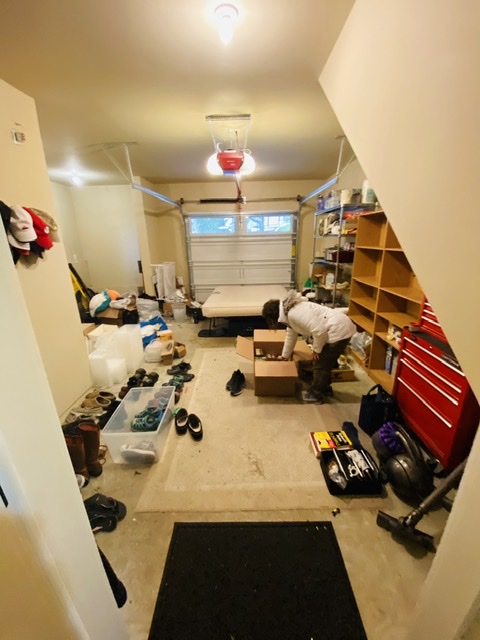
(The garage became the clearing center for all the miscellaneous pieces still looking for homes.)
I’ve learned some interesting lessons through this process:
– Everyone has different relationships to stuff, and different experiences with letting stuff go. For me, I’m not attached to things, and I feel little remorse when things walk out the door. Actually, I feel elated when things walk out the door, because it’s one more thing off my to do list. And even as much as I love the process, it was also extremely taxing and difficult, and I don’t think a day passed during the last week that I didn’t shed tears over how overwhelmed I felt by the quantity of stuff and work to do. Mark processed it differently. Things for him contain memory, and potential, and emotion. Letting things go also means letting go of all those things contained therein, and that can feel really sad for him. For the girls, they’ve had a lot of sadness around their dolls and stuffies. They describe many of them as “friends” or their “children” and they’ve had a hard time saying goodbye to many of them. The most precious ones we’ve kept and boxed up, and even saying “so long for now” was difficult for them.
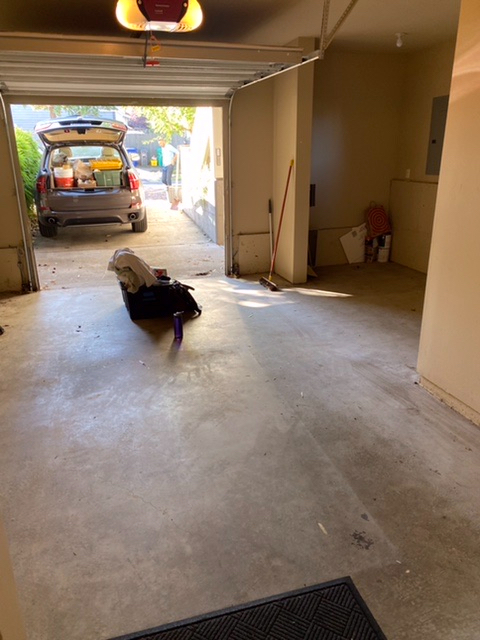
(The last load in an otherwise empty garage.)
– This has already changed how the girls spend their allowance money. We’ve never put restrictions on what they buy as we feel like there are important lessons to be learned with that autonomy. But since committing to the RV, their spending has dropped significantly, their savings are way up, and they can walk into a store and look around and leave without even seeming like they wanted to buy anything. This is allowing us to have conversations about the downsides of plastic toys (“What do you mean no one wants this used? It can’t be recycled??”). And it’s helped them see how much they had and to be able to talk about the kids who have so little. They felt better giving away so much stuff knowing that it would go to kids who were in difficult life circumstances and situations. My hope is that it makes a long term shift in their relationship to consumption and allows them to have a bigger perspective ecologically and socially.
– Even before deciding to make this giant leap into tiny space, we were not big shoppers. And yet I’m seeing how much more intention and consideration we could have placed on the things we bought. Now as we’re figuring out few remaining things we need that are specific to the RV, we’ll be thinking a lot more about qualities like: durability, recyclability/ resale-ability, size & weight, multifunction, and whether something is just right or only good enough. We’re making what we already had work for our new needs in the RV.
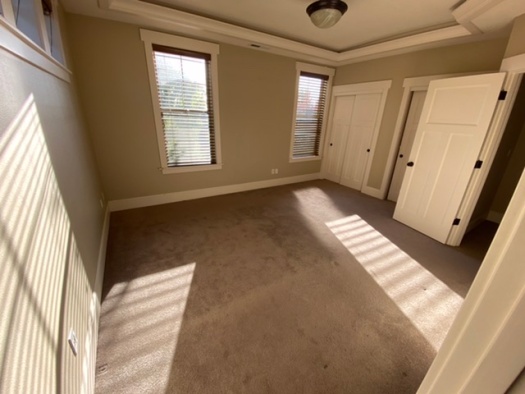
(As glad as we were to say goodbye to stuff, it was hard to say goodbye to this sweet home that sheltered us so perfectly for so many years!)
I often joked that I should update my resume to reflect one of my primary jobs: “Stuff Management.” So much of my time before was spent shopping for, cleaning up, putting away, fixing, organizing, and moving stuff. While we’re on the tail end of stuff management overload, I’m hopeful that after this is all done, and we have significantly less stuff to manage, so more of my time and energy can be spent in more meaningful ways. And I hope that whenever we do return to a less nomadic way of living, that the lessons of this uncoupling process will stay with us, and we’ll make different decisions about what we buy, how we fill our house, and how we spend our time and money.
